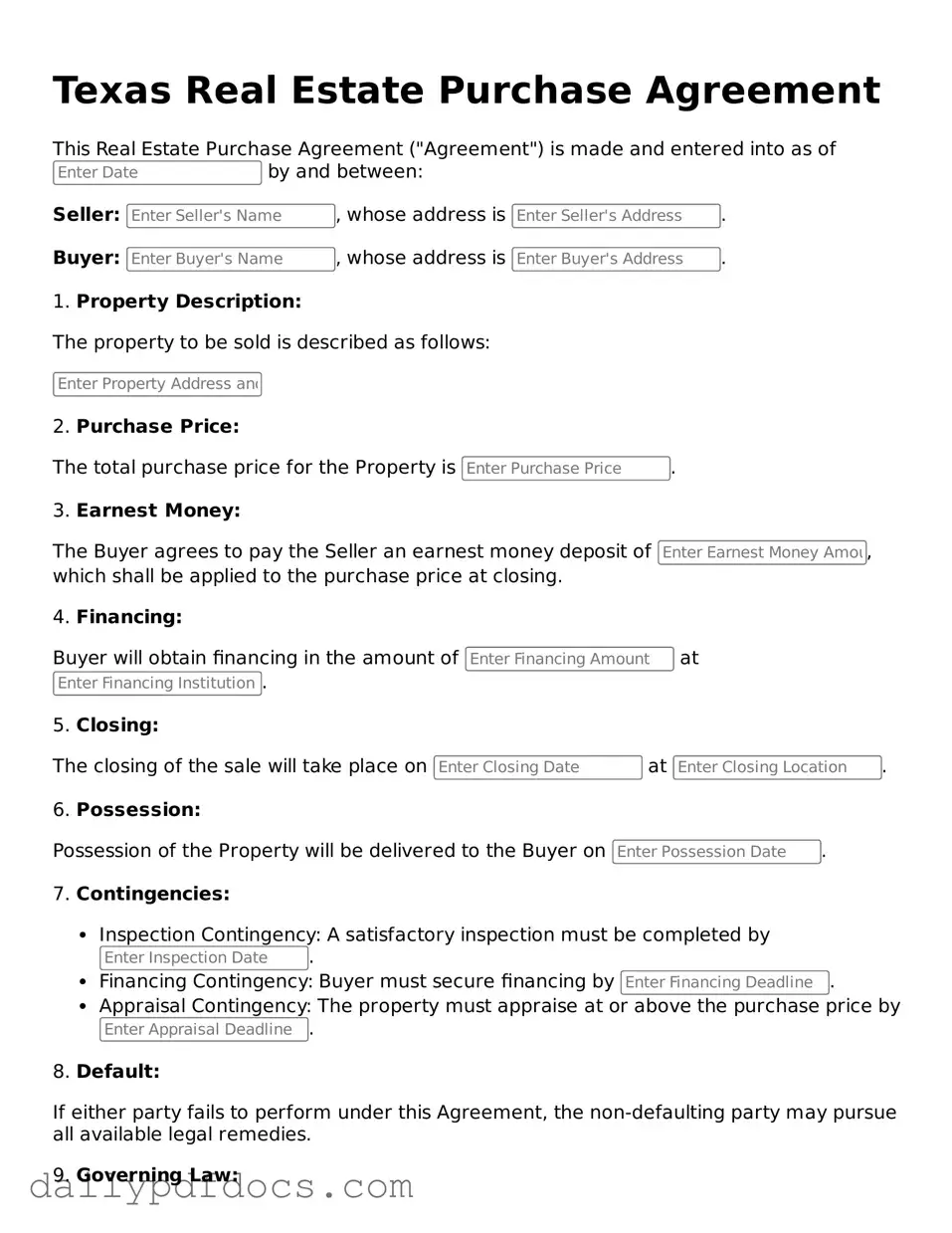Printable Real Estate Purchase Agreement Document for Texas
The Texas Real Estate Purchase Agreement is a legal document used to outline the terms of a real estate transaction in Texas. This form is essential for both buyers and sellers, as it provides clarity on the obligations and expectations of each party. Understanding this agreement is crucial for ensuring a smooth and successful property transfer.
Make My Form
